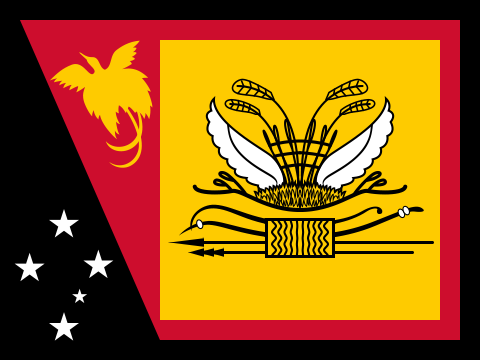Our Districts
Western Province has 4 Districts. The Middle Fly District was split in 2022 to create the Delta Fly District
The South Fly District is a region located in the Western Province of Papua New Guinea and is situated in the southern part of the Fly River delta. The District is characterized by vast wetlands, swamps, and mangrove forests. It is intersected by numerous rivers, including the Fly River, which is one of the largest rivers in the country. The district shares borders with Indonesia to the west and the Gulf Province to the east.
The economy of the South Fly District is primarily based on agriculture, fishing, and mining. The fertile soil and favorable climate support the cultivation of crops such as rice, vegetables, fruits, and cash crops like cocoa and coffee. The rivers and coastal waters provide a rich fishing ground, and the district is known for its seafood production. Additionally, small-scale mining activities contribute to the local economy.
The district's infrastructure is relatively underdeveloped compared to urban centers in the country. Access to basic services such as healthcare, education, and transportation can be limited, particularly in remote areas. However, efforts are being made to improve infrastructure and provide essential services to the communities.
The South Fly District is ecologically significant, hosting diverse wildlife and unique ecosystems. The wetlands and mangrove forests are important habitats for numerous bird species, reptiles, and other wildlife. The district also faces environmental challenges, including deforestation and pollution from mining activities, which require sustainable management practices.
The region is known for its remarkable biodiversity, with a wide range of plant and animal species found in its forests and waterways. The Fly River and its tributaries support diverse aquatic life, including various fish species and crocodiles. The area is also home to numerous bird species, butterflies, and other wildlife.
In summary, the North Fly region of the Western Province in Papua New Guinea is characterized by its diverse landscapes, rich cultural heritage, and significant natural resources. With careful planning and sustainable practices, the region can harness its economic potential, protect its unique biodiversity, and improve the quality of life for its residents.
The Delta Fly District in Western Province is one of the new districts recently formed from the three existing districts. The first representative for the region to the national parliament was elected in the last elections (2022).
The Middle Fly is a region located in the Western Province of Papua New Guinea. It is named after the Fly River, one of the country's largest rivers, which flows through the area. The Middle Fly region encompasses a diverse range of landscapes, including expansive river systems, wetlands, savannahs, and tropical rainforests. The region is home to several indigenous communities, including the Marind, Kiwai, and Arapesh people. The rural local communities rely on subsistence agriculture, fishing, and hunting for their livelihoods.
The Middle Fly region is known for its unique biodiversity and ecological importance. The Fly River and its tributaries support a diverse range of plant and animal species, including numerous bird species, crocodiles, and fish. The vast wetland areas provide habitats for various waterfowl and migratory birds. The region is also home to the vast Kikori River Delta, which is a Ramsar Wetland of International Importance.
Efforts are underway to promote sustainable development and improve living conditions in the Middle Fly region. The government, in collaboration with local communities and development partners, is working on infrastructure development, education programs, healthcare initiatives, and conservation efforts. Community-based ecotourism projects and sustainable agriculture practices are also being encouraged to enhance livelihood opportunities and preserve the unique natural heritage of the region.
